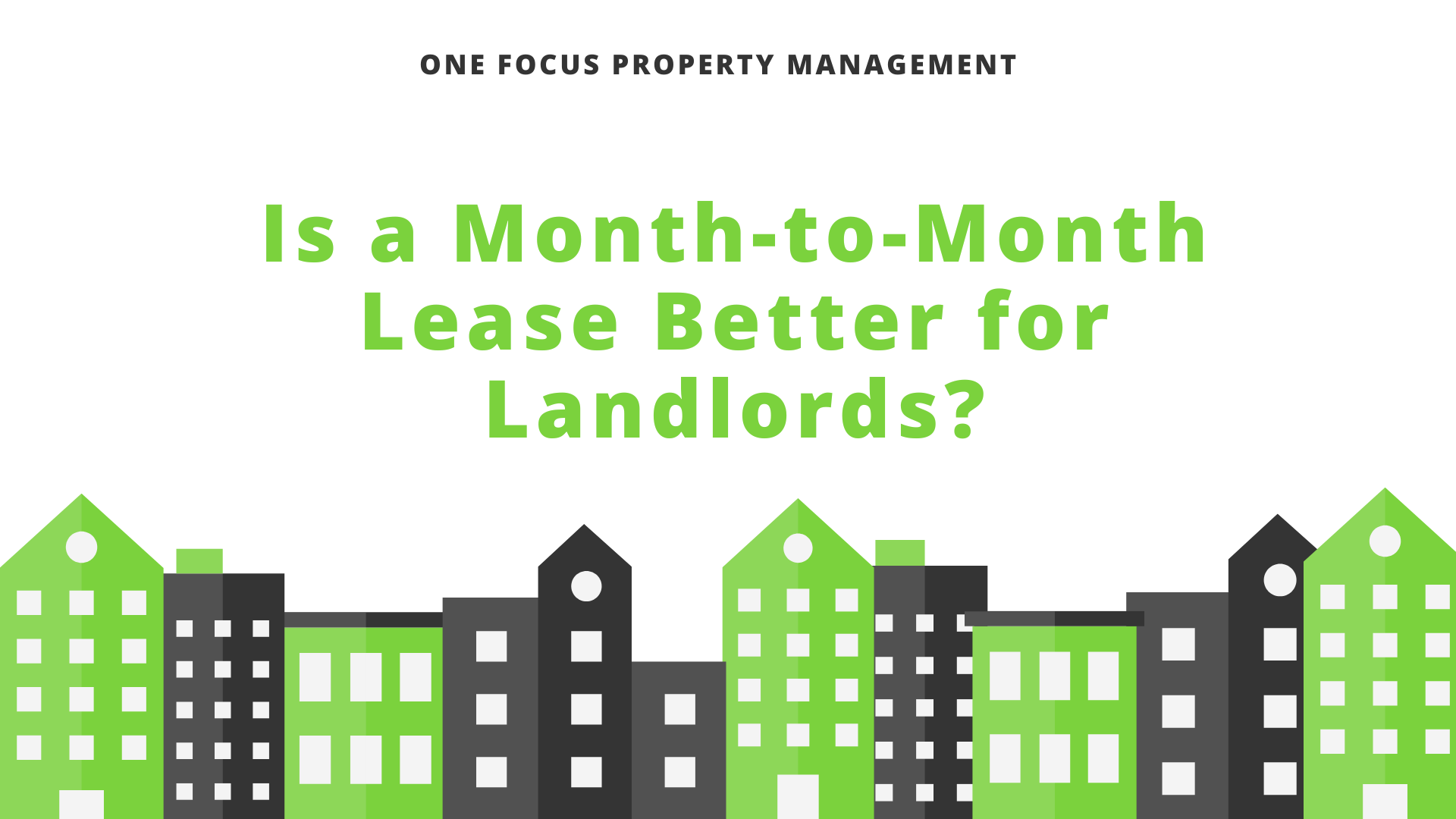When it comes to leasing their property, landlords have various choices. The month-to-month lease is one kind of lease that has grown in popularity over the past few years. This arrangement offers a degree of adaptability and independence that is not present in customary long-term leasing arrangements.
But what exactly is a month-to-month lease, and is it the best option for you? We'll go through the essentials of this kind of lease in this article to help you decide if it's the right arrangement for your rental property.
What is a Month-to-Month Lease?
A month-to-month lease is a rental agreement that renews automatically every month unless the landlord or the tenant provides written notice to terminate the lease. This kind of lease gives both the landlord and the tenant flexibility because it permits either party to terminate the tenancy with as little as 30 or 60 days' notice.
How Does a Month-to-Month Lease Work?
A month-to-month lease runs on a rolling basis. Unless the landlord or the tenant gives notice of termination, the lease will automatically renew each month. This agreement is typically shorter than a standard lease agreement, usually lasting between 30 and 60 days. However, the lease's conditions can be changed at the end of each month.

In a month-to-month lease, the landlord has the freedom to increase the rent whenever they choose as long as they give the tenant adequate notice.
Additionally, the tenant has the right to leave the property whenever they want as long as they give the landlord due notice. Due to its degree of flexibility, month-to-month leases are preferred by both landlords and tenants who wish to avoid long-term vacancies and long-term commitments.
It is important to keep in mind that with a month-to-month lease, both the landlord and the tenant have a greater need to communicate and abide by the conditions of the lease. The lease agreement must be drafted and spell out each party's obligations, including how to end the agreement and how to raise the rent.
A month-to-month lease can be advantageous for both parties with good communication and a well-written lease agreement.
When Would You Use a Month-to-Month Rental Agreement?
Landlords should consider a month-to-month lease in the following circumstances:
When a landlord is looking for a temporary tenant to fill a vacancy.
When the landlord wants to preserve their potential to use the property for either personal use or for sale.
When the tenant is between long-term leases or is unsure if they want to commit to a long-term lease.
When a landlord wants the freedom to change rent pricing because they need clarification of the state of the rental market.

Benefits of Month-to-Month Leasing
Increase Control: A month-to-month contract allows landlords more control over their rental properties. Since the lease is perpetually renewed, landlords can monitor the tenant's performance and behavior monthly. Only after a long-term lease can a landlord rapidly terminate the lease agreement if they decide that a tenant is not a good fit for the property.
Flexible Rent Pricing: The flexibility a month-to-month lease offers in terms of rent price is one of its main benefits. Landlords can make rent price adjustments monthly, which is advantageous in a dynamic rental market. This adaptability enables landlords to remain profitable and competitive while giving tenants a nice place to live.
Flexibility on Policies: A month-to-month lease allows landlords to change policies as needed. For instance, if a landlord decides to allow renters with pets, they don't need to wait for the subsequent lease renewal to make the change. Adapting to shifting market conditions and tenant preferences is beneficial for landlords.
Easy Tenant Replacement: In a month-to-month lease, if a tenant decides to vacate the property, the landlord can quickly find a replacement without waiting for the end of a long-term lease. This can assist landlords in avoiding extended vacancies and keeping a consistent flow of rental money. In addition, the landlord has the right to swiftly and without cause terminate the lease if the renter is not a good fit for the property.
Flexible End-Dates: Unlike standard lease contracts, month-to-month leases allow renters to terminate the agreement whenever they want without being penalized. Tenants who need to move quickly or who wish to avoid long-term obligations may find this beneficial. It can also give landlords peace of mind because they know they can terminate the lease arrangement without being penalized if they need to.

Disadvantages of a Month-to-Month Lease
Unstable Revenue: The lack of income security associated with a month-to-month lease is its main drawback. Landlords with month-to-month leases must regularly advertise their rental properties to maintain a steady flow of rent.
Less Time to Market Your Rental: Landlords who rent their properties month-to-month have less time to advertise their properties and locate new tenants if the existing tenant decides to vacate.
Increased Maintenance Costs: With a month-to-month lease, frequent tenant turnover may increase landlord maintenance costs. Every time a tenant vacates the property, the landlord is responsible for preparing the place for a new renter, which may entail doing some deep cleaning, painting, fixing any wear and tear, or repair work. These expenses may accumulate over time and harm the landlord's bottom line.
Cost of Turnover: A month-to-month lease's frequent tenant turnover can be expensive for landlords who must continually assess potential tenants, clean the place, and make any necessary repairs.
Frequent Tenant Screenings: Landlords must regularly evaluate potential renters to ensure they are a good fit for the rental home. Due to the necessity of routine background checks and credit checks, this can take time and effort.
Conclusion
In conclusion, landlords who desire flexibility and the opportunity to replace tenants swiftly may find a month-to-month contract a desirable choice. However, it also has drawbacks, such as unstable rental income, insufficient time to promote the rental property, high turnover costs, and regular tenant screenings.
We at One Focus Property Management know the difficulties landlords encounter while deciding on the best lease arrangement. Our staff can guide you through the benefits and challenges of a month-to-month lease and make sure your rental property is managed correctly.
Our goal is to assist you to make decisions that will ultimately benefit you and your renters the most! Contacts us today, we are always ready to help!



